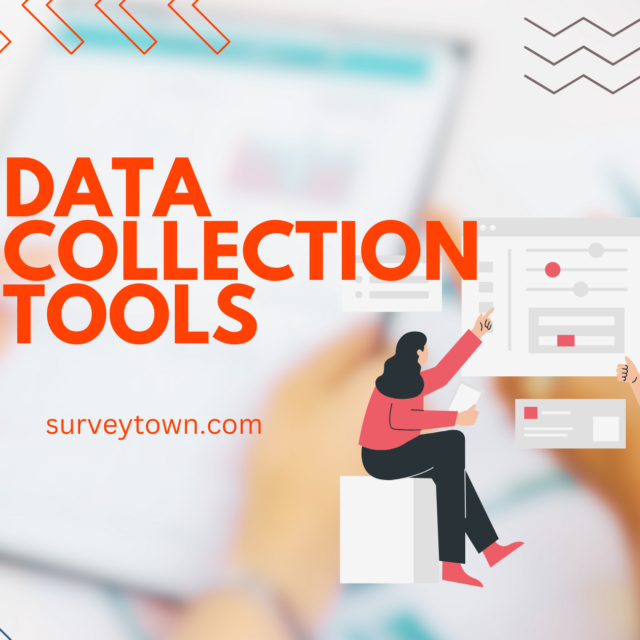Welcome to our expert guide on revolutionizing your organization’s success through employee surveys. Employee feedback is not just a formality; it sparks growth and development within your business. When employees feel valued and heard through surveys, they become more engaged, leading to increased productivity and job satisfaction across the board. Surveys provide a safe space for employees to freely express themselves without fear of consequences. Regular employee surveys act as vital health check-ups for your organization, revealing trends in satisfaction levels and identifying potential issues before they escalate.
Click here to learn all about employee survey tools!
Key Elements of an Effective Employee Survey
Employee surveys are a powerful tool that can unlock valuable insights into your organization’s satisfaction and engagement levels. By tapping into the thoughts and opinions of your workforce, you gain a deeper understanding of their needs, concerns, and overall sentiment. In this section, we will delve into the key elements that elevate an employee survey from good to exceptional.
- Crafting Clear and Concise Questions: The art of designing an effective employee survey lies in crafting questions that are crystal clear and concise. It is crucial to ensure that each question is easily understood by employees without any ambiguity or confusion. Steer clear of jargon or technical terms that may alienate staff members who aren’t familiar with them. Instead, opt for simple and straightforward language to elicit accurate responses.
- Embracing Anonymity for Candid Feedback: To foster a culture of honesty in your employee surveys, it is paramount to provide anonymity. When employees feel safe expressing their opinions without fear of repercussions, they are more likely to provide genuine feedback. Assure your team members that their identities will be kept confidential throughout the entire survey process.
- Harnessing the Power of Regular Surveys: Consistency is key when it comes to conducting employee surveys if you want to maintain a finger on the pulse of your organization’s health and identify areas for improvement over time. By implementing regular surveys at consistent intervals (such as annually or biannually), you can track changes in employee satisfaction levels and measure progress against previous results.
Best Practices for Designing Employee Surveys
Designing employee surveys that yield valuable insights and feedback from your staff is a critical aspect of effective engagement. By implementing best practices, you can ensure that your surveys are well-crafted, user-friendly, and provide actionable data. Here are some expert tips to consider when conducting employee surveys:
- Clearly Define the Survey’s Purpose: Before creating a survey, it is essential to have a clear understanding of its purpose. Are you aiming to measure overall employee satisfaction? Identify areas for improvement in specific departments? Gather feedback on recent changes or initiatives? Defining the purpose will guide the formulation of relevant questions and focus the survey.
- Strike a Balance Between Quantitative and Qualitative Questions: To gain comprehensive insights into employee sentiment, it is crucial to include both quantitative (multiple-choice) and qualitative (open-ended) questions in your survey. While quantitative questions allow for easy analysis and comparison across different groups or time periods, qualitative questions provide a deeper understanding of employees’ thoughts and experiences.
- Prioritize User-Friendliness: A user-friendly survey enhances response rates while ensuring accurate data collection. Maintain a clean layout with clear instructions for each question. Use simple language that all employees can easily understand, avoiding jargon or technical terms whenever possible.
- Strategize Question Order: The order in which you present your questions can influence respondents’ perceptions or impact their answers. Begin with more general inquiries before delving into specific ones related to job satisfaction or the work environment. This approach helps respondents ease into providing honest feedback without feeling overwhelmed.
- Keep Surveys Short but Impactful: Long surveys often lead to respondent fatigue, resulting in incomplete responses or decreased engagement over time. Keep your surveys concise by focusing on essential topics aligned with your goals. If necessary, consider breaking longer surveys into shorter modules.
- Use Clear Rating Scales: When employing rating scales such as Likert scales, ensure that the scale is clearly defined and consistent throughout the survey. This facilitates easier analysis and interpretation of responses.
- Pilot Test Your Survey: Before launching your survey to all employees, conduct a pilot test with a small group to identify any potential issues or areas for improvement. This step allows you to refine your questions, check for clarity, and ensure the smooth functioning of the survey.

Analyzing and Acting on Survey Results
Congratulations on successfully conducting your employee survey! Now, it’s time to dive into the data and take meaningful action based on the results. As an expert in this field, I will guide you through the essential steps to ensure that you make the most of your survey findings.
- Thorough Data Analysis: Unveiling Insights To begin with, dedicate ample time to carefully review and analyze all the data collected from your employee survey. Look beyond surface-level responses and dig deeper to uncover patterns, trends, and correlations. By doing so, you can identify key areas of concern or improvement within your organization. If needed, leverage statistical analysis tools or software to gain even deeper insights into the data.
- Transparent Sharing of Results: Building Trust Transparency is crucial when sharing survey results with your employees. It is important to communicate both positive findings and areas that need improvement openly and honestly. Provide clear explanations of how their feedback has influenced decision-making processes within the organization. This fosters trust among employees as they see their voices being heard.
- Taking Action Based on Survey Results: Driving Change Promptly address any issues identified through the survey by developing a comprehensive action plan outlining specific steps that will be taken to address concerns raised by employees. Involve relevant stakeholders in implementing these changes and monitor progress regularly. By following these best practices for analyzing employee surveys comprehensively, sharing results transparently with employees, and taking prompt action based on those results, you demonstrate a strong commitment to improving workplace satisfaction and engagement levels within your organization.
Choosing the Right Employee Survey Tool
When it comes to conducting employee surveys, the tool you choose can make or break your entire survey experience. It’s not just about asking questions; it’s about engaging your staff, gathering valuable feedback, and driving satisfaction in the workplace. In this section, we will delve into the key factors to consider when selecting an employee survey tool and showcase some of the top-notch options available in today’s market.
- Essential Features of Your Employee Survey Tool: A stellar survey tool should offer endless customization options to meet your unique needs. Personalization is key, from adding your company logo to tailoring questions for different departments or roles. Look for an intuitive design that effortlessly guides administrators and employees through each step. Seek out features like real-time reporting dashboards, customizable charts and graphs, and the ability to export raw data for further analysis. Make sure your chosen survey tool seamlessly integrates with other systems used in your organization, such as HR software solutions or communication platforms.
- Benefits Galore When Using a Dedicated Survey Tool: By utilizing a dedicated survey tool instead of relying on paper-based surveys or spreadsheets, you save precious time. Protecting sensitive employee information is paramount. As your organization grows, so does the need for conducting surveys among a larger number of employees.
- Top Tools That Reign Supreme: Renowned and revered, SurveyTown stands tall as one of the most popular survey tools available today. If you crave powerful analytics capabilities in your survey tool arsenal, look no further than Qualtrics. Seeking a budget-friendly option without sacrificing functionality? Enter Google Forms!
Conclusion: Best Practices for Conducting Surveys
In conclusion, when it comes to conducting surveys, there are several best practices that can greatly enhance the engagement and satisfaction of your employees. As experts in this field, we have firsthand experience with what works best and can provide you with valuable tips on how to make the most out of your survey efforts.
Firstly, it is important to be clear about the purpose of your survey. Ask yourself what specific questions you want to answer or what information you hope to gather from your employees. This will help guide the design and structure of your survey, ensuring that it is focused and effective. Next, consider the timing of your survey. It’s crucial to choose a time when employees are likely to be available and receptive.
When crafting your survey questions, keep them concise and easy to understand. Use simple language and avoid jargon or technical terms that may confuse participants. Additionally, consider using a mix of question types such as multiple choice, rating scales, and open-ended questions for a more comprehensive understanding. To maximize employee participation rates, communicate clearly about why their feedback is important and how it will be used.
Highlight any potential changes or improvements that may result from their input. Not only does this motivate employees, but it also demonstrates that their opinions truly matter. Furthermore, ensure anonymity in order to encourage honest responses without fear of repercussions. Assure employees that their individual answers will remain confidential so they feel comfortable sharing their true thoughts and experiences.
Once you have collected all the data from your surveys, take time to analyze the results thoroughly. Look for patterns or trends within different departments or groups within your organization, which could provide valuable insights into areas for improvement.
Finally, don’t forget about follow-up! Share key findings with all participants so they know their feedback was heard and valued. Additionally, consider implementing action plans based on the survey results to address any identified issues or concerns.
By following these best practices, you can ensure that your surveys are engaging, satisfying, and provide meaningful insights into what matters most to your staff. So go ahead and start implementing these tips in order to create a more productive and fulfilling work environment for everyone involved!




